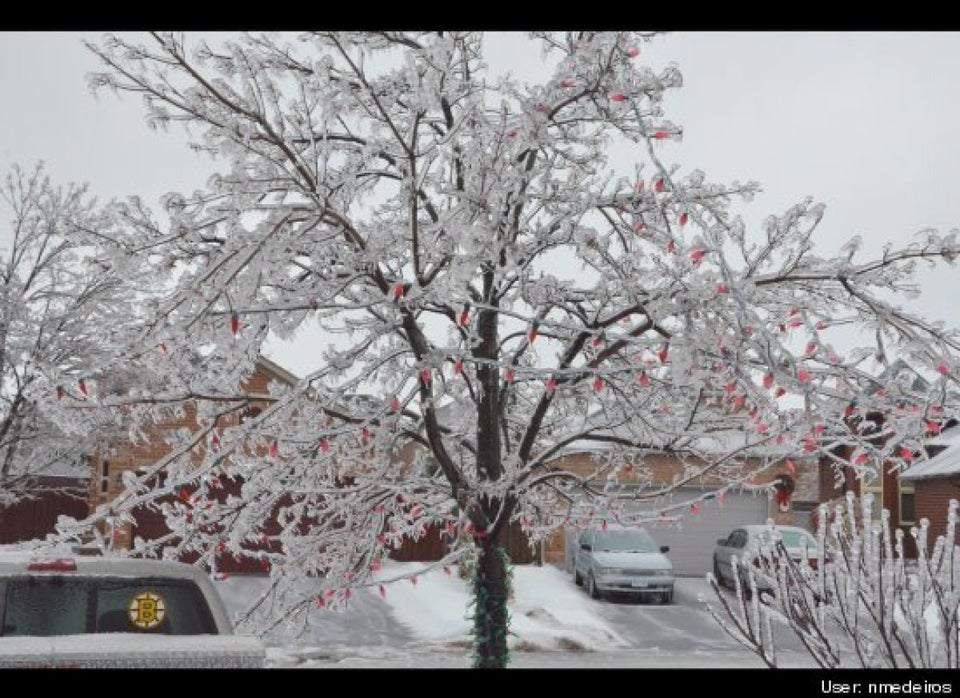Days after a massive ice storm hit parts of Ontario and Quebec over the weekend, damaged trees and downed branches remain widespread hazards, raising the question: what will happen to the trees?
Though the ice storm damage seems overwhelming to some Ontarians, it remains early to understand the full extent of damage to the region’s tree line. Without a significant rise in temperature, trees haven’t been able to thaw and recover from the weight of ice accumulated on their branches.
However, there is a benefit to freezing rain’s effect on some trees.
Healthy trees will be able to recover from glaze ice, the smooth coating of ice formed around trees and plants as a result of freezing rain, but it also relieves unhealthy trees of dead branches and speeds up their falling.
Story continues below slideshow
The drawback, of course, is public safety and arborial health repercussions: injuries and cracks from storm damage can create openings for insects and diseases to attack trees.
Forestry workers are prioritizing removing fallen and at-risk-of-falling branches on or near power lines first over cleaning up large-scale recreational areas, such as Toronto’s Discovery Walk — an 11-km long route connecting Belt Line Linear Park to the Don Valley’s wooded ravines.
Toronto has an estimated 10.2 million trees over 18,000 hectares, 40 per cent of which are situated on public property.
According to City of Toronto Parks Director Richard Ubbens, over 2,400 service requests have been made since Dec. 22. He adds his operational crews have been pulling 12-hour shifts; half working on hydro-related issues, the other half on clearing closed roads.
The scale of the ice storm damage has forced officials to hire additional contract crews, including Ontario Line Clearing and Davey and Weller Tree Service, to clean up city streets.
Most fallen branches are being fed through wood chippers, while medium-to-large limbs and stumps are being collected at the city’s Urban Forestry Yard. But just because trees have been encased with ice and frozen in slumped positions doesn’t mean they’re doomed for a wood-pulp fate.
“Mother Nature destroyed a lot of trees,” veteran Toronto Hydro forester David Knight told The Toronto Star. “But a lot of them will grow back again — will bring out new shoots.”
Toronto residents can contact Urban Forestry Services at 416-338-TREE (8733).
